| Last Year | Rank | Name | Turnover previous (£m) | Turnover latest (£m) | Change % | Profits previous (£m) | Profits latest (£M) | Change % |
| 1 | 1 | Booker | £4,681.0 | £4,753.0 | 1.5 | £118.7 | £138.8 | 16.9 |
| 2 | 2 | Palmer and Harvey | £4,197.0 | £4,465.5 | 6.4 | -£1.3 | -£8.5 | 553.8 |
| 3 | 3 | Brakes | £3,020.0 | £3,094.0 | 2.5 | £140.2 | £150.2 | 7.1 |
| 5 | 4 | Bidvest Foodservice | £2,233.6 | £2,367.7 | 6.0 | £10.6 | £11.3 | 6.5 |
| 4 | 5 | Bestway | £2,370.0 | £2,270.0 | -4.2 | £49.2 | £44.6 | -9.3 |
| 6 | 6 | Connect Group* | £1,808.5 | £1,810.8 | 0.1 | £38.9 | £48.6 | 24.9 |
| 7 | 7 | Costco* | £1,646.3 | £1,778.1 | 8.0 | £13.1 | £17.2 | 31.0 |
| 9 | 8 | AF Blakemore & Son | £1,190.0 | £1,280.0 | 7.6 | £7.6 | £9.0 | 18.4 |
| 8 | 9 | Menzies Distribution | £1,277.5 | £1,261.3 | -1.3 | £24.3 | £24.0 | -1.2 |
| 11 | 10 | Matthew Clark | £805.5 | £810.7 | 0.7 | £13.3 | £17.6 | 32.8 |
| 12 | 11 | Dhamecha Cash & Carry* | £599.3 | £637.5 | 6.4 | £12.7 | £13.7 | 8.1 |
| 15 | 12 | Henderson Group | £487.0 | £493.7 | 1.4 | £14.9 | £15.8 | 5.8 |
| 13 | 13 | James Hall* | £482.2 | £483.9 | 0.4 | £4.0 | £4.6 | 13.9 |
| 14 | 14 | Crown Crest* | £430.2 | £451.0 | 4.8 | £9.6 | £9.2 | -4.2 |
| NEW | 15 | Kitwave One | £197.2 | £227.8 | 15.5 | £2.5 | £3.3 | 32.7 |
| 16 | 16 | AG Parfett & Sons | £308.8 | £310.4 | 0.5 | £3.6 | £2.5 | -30.9 |
| 18 | 17 | United Wholesale Scotland | £212.0 | £221.7 | 4.6 | £2.1 | £2.0 | -2.1 |
| 19 | 18 | Reynolds Catering Supplies | £211.0 | £203.0 | -3.8 | £2.0 | £1.7 | -15.0 |
| 20 | 19 | CJ Lang & Son | £194.7 | £196.0 | 0.7 | £1.1 | £1.3 | 12.8 |
| 22 | 20 | DCS Group* | £179.7 | £182.9 | 1.8 | £2.5 | £2.3 | -8.9 |
| 21 | 21 | JJ Food service | £182.6 | £181.7 | -0.5 | £7.5 | £11.1 | 47.3 |
| 23 | 22 | East End Foods* | £170.3 | £176.7 | 3.8 | £4.1 | £4.3 | 5.7 |
| 17 | 23 | HT and Co Drinks* | £218.1 | £155.0 | -28.9 | £3.4 | £4.3 | 24.9 |
| 25 | 24 | Fairfax Meadow* | £153.4 | £153.5 | 0.1 | £2.1 | £2.6 | 24.7 |
| 24 | 25 | JW Filshill | £158.0 | £151.0 | -4.4 | £0.8 | £1.4 | 75.0 |
| 30 | 26 | Hyperama* | £123.3 | £133.0 | 7.9 | £0.9 | £0.9 | 2.7 |
| 29 | 27 | United Wholesale Grocers* | £128.4 | £132.1 | 2.9 | £0.6 | £0.7 | 20.3 |
| 26 | 28 | Elbrook Cash & Carry | £130.0 | £119.9 | -7.8 | £6.0 | £5.1 | -14.6 |
| 27 | 29 | Appleby Westward* | £133.8 | £101.2 | -24.3 | £0.4 | £1.1 | 179.6 |
| 28 | 30 | Hancocks Cash & Carry* | £82.7 | £80.6 | -2.5 | £4.7 | £3.5 | -25.5 |
Consolidation. It’s a word everyone in wholesale has been acutely familiar with for years, but 2015 has proved an especially lively 12 month spell with deals of all varieties.
The most eye-catching moves were Booker’s £40m acquisition of Musgrave’s GB operation, and the intriguing £200m reverse takeover by Conviviality Retail (owners of Bargain Booze) of on-trade drinks wholesaler Matthew Clark.
At the same time the continued expansion-by-acquisition strategy of Kitwave has resulted in its inclusion in The Grocer’s Big 30 ranking for the first time.
But big or small, the huge structural and legislative challenges on the grocery retail side, and the fast-evolving foodservice market, means wholesale remains a sector where the next big deal always feels imminent.
Booker, a key consolidation player (it also bought Makro for £140m in 2012), remains the biggest player in the game. Its latest accounts, for the year to March 2015, show sales up 1.5% to £4.75bn with a 16.9% surge in pre-tax profits to £138.8m. And that’s before the Budgens/Londis numbers are incorporated for 2015/16.
“If you go back five years we were talking about the race to consolidate,” says Booker CEO Charles Wilson. “Now, if you look at the Big 30 wholesalers in 2011, six of those 30 have either been bought or gone into administration. That’s a significant change in a short period of time.”
Other big deals in recent years have included AF Blakemore’s acquisition of fellow Spar wholesaler Capper & Co, the collapse of drinks wholesaler Waverley TBS and DBC Foodservice, the merger of Brakes and Fresh Direct and its pending acquisition of Davigel, and Bestway’s purchase of The Co-operative Group’s pharmacy business.
And then there is Kitwave One. The acquisitive outfit has mopped up 11 smaller players in the five years since it secured funding from private equity firm NVM (see box, p46). And Kitwave’s majority shareholder and founder Paul Young has ambitious plans to more than double sales and hit a £500m turnover.
“We know the market needs consolidation,” says Palmer & Harvey MD Martyn Ward. “So while you can never work out who is going to go to who, it’s quite clear the major players will look to lead the consolidation and not be consolidated. What’s happened so far is no big surprise, and I’m fairly convinced more will happen. It’s just a matter of who, when, and what that looks like.”
At the same time as the market is consolidating, Wilson says other disruptions mean a “sense of fragmentation” is going on. He points to an expanding number of routes to market for suppliers, while the number of companies competing for an established wholesaler’s existing business has increased as each player diversifies.
New specialists
Wilson also sees increasing numbers of specialist operators, like those offering solely Polish or Chinese products, or those specialising in fresh produce, meat and fish, making inroads. And he points to another threat looming large in wholesale, the third-party logistics operators looking to play in the same territory previously reserved for the wholesalers.
Last month Compass Group agreed a five-year joint venture with DHL in which they will provide catering services to customers in the public sector, airline, rail and facilities management industries (see box, p44).
Announcing the deal, the parties said the partnership would provide a “new force” and create “a major new disruptor” in the foodservice sector.
Ward identifies other factors currently impacting the wholesale sector, like a “huge number” of wholesale suppliers that have sprung up to meet trends in convenience like consumer demand for more local produce, meals for tonight and to support local, independent shops.
The upshot is “a definite increase in competition” says Ward, particularly on the fresh produce and meat side. “At P&H we think competition is good. It keeps you focused and on your toes. Competition makes you look at what you do, and we’ve taken a long hard look at the products and services we supply.”
The challenge of delivering or offering quality fresh produce to independent retailers, food-to-go operators and caterers is one exercising everyone involved in distribution. It also offers advantages to smaller, more flexible operators, or even those who are simply closer to their customers.
But for all the progress that’s been made, the difficulties involved were exposed in stark fashion last month, when fledging independent chain My Local admitted it had lost business as the quality of its fresh offer fell short compared to when the same stores were owned by Morrisons.
Earlier this month, My Local CEO Mike Greene went so far as to say his number one priority was to work with his £1bn five year distribution partner Nisa to improve the quality of his fresh offer.
He is far from alone. And it looks like Bestway, which is number five on our Big 30 Wholesaler list, could show him a trick or two. This week Bestway revealed the results of its new centrally picked chilled ordering scheme, available to members of its Best-one symbol group. And, so far, the numbers look good.
Launched last October, the scheme has cut an entire day out of the Bestway chilled supply chain. Orders are picked centrally at store, delivered to the retailer’s nearest depot, and sent to stores within 24 hours. As a result, chilled availability has increased to a record 97% and sales are up by over a third. Sales of fresh fruit and vegetables are up 46%. And sales of fresh meat have grown 17%.
Vital figures all, because “chilled will account for 40% of a store’s total taking by 2020,” predicts Bestway symbol director James Hall.
“Given the introduction of the national living wage, the insurance premium tax and the reduction of tax-fee dividend income, retailers will [start to] find life that little bit more expensive. So it is critical they focus on high-margin areas such as fresh and chilled.”
The growing significance of a high quality chilled and fresh offer has been building for years, but in 2016 it’s of greater importance than ever. The lines between supermarkets and convenience have blurred, while the discounters continue to use value fresh and chilled as a sharp weapon in their battle for market share.
It’s a “difficult market to get right,” agrees Ward.
“There is definitely an element of scale that gets you quality and price. But quality is the key thing. When it comes to a tin of beans or box of cornflakes, you get fairly standard quality. But when you are sourcing fresh produce it’s very difficult to make sure you’re getting the really good quality that convenience consumers are now demanding.”
Red tape
There are also a number of challenges facing the wholesale sector right now that are definitely not of their own making, and over which they have little control.
Wholesalers are no strangers to the impact of regulation and red tape, but over the next 18 months the sector looks set to face the most significant legislative challenges for a long time.
As of April, the government will introduce the new national living wage (NLW) of £7.20 per hour. This will then rise each year until it hits £9 in 2020.
A report by the FWD published this week predicted significant extra costs for its members.
It follows a similar ACS report in November, which warned the Low Pay Commission that the NLW would cut investment by retailers, reduce staff hours and damage pay structures.
“While we support fair pay, the NLW will impose a very significant and, for some, an unsustainable wage increase,” said FWD CEO James Bielby.
“Employers will have to maintain wage differentials and pay the under-25s more. In a low-margin business this is very significant.”
Bestway group trading director Martin Race warns that the NLW “could affect the number of retailers in business. Some customers are already finding trading conditions difficult. The added burden of paying out more in wages will affect profitability. The government should be looking at ways of helping small businesses pay the living wage rather than imposing a blanket wage structure regardless of size or turnover.”
The government is also pushing ahead with plans to relax Sunday trading hours in England and Wales, a move likely to negatively impact wholesalers’ convenience retail customers. And to top it off, this year will see some of the biggest changes in the history of the tobacco category.
It’s an area of particular importance to many wholesalers and their customers. But this year will bring the implementation of the latest EU Tobacco Products Directive (EUTPD2). From May 2016, manufacturers will cease producing packs smaller than 20 cigarettes and 30g of rolling tobacco. Stores will have 12 months to sell existing stock before a total ban kicks in.
Henderson Wholesale sales and marketing director Paddy Doody describes the move as “another example of government intervention that loads costs on to independent retailers with the dubious argument of it leading to a reduction in smoking over the long term”.
Alongside the pack sale changes, EUTPD will ban price-marked packs and bring in larger health warnings. The government also plans to bring in plain packaging on a similar timetable. It means every tobacco SKU changing to some degree.
To manage the scale of change, Palmer & Harvey has taken the tobacco category out of its normal day-to-day trading operation and appointed a “specific team” who are “crawling all over this to ensure we are working as an industry,” says Ward. “This is not a time for market share gain. This is an industry change that everyone needs to focus on. It’s the biggest change we will ever see in the wholesale market. It’s enormous.”
Positives
Despite the challenges there are positives to celebrate in wholesale. Continued low fuel prices are always welcome in a sector dedicated to the movement of fmcg products. And the Alcohol Wholesaler Registration Scheme (AWRS) will come into force this year. It represents a key tool in the battle against duty fraud on alcohol, which has blighted wholesale’s legitimate operators for many years now.
As it stands, just over 1,200 of the potential 20,000 operators have signed up ahead of next month’s deadline. The FWD is calling on all legitimate traders to register in order to help crackdown on the fraudsters.
Booker’s Wilson welcomes the scheme and believes it will create a more level playing field for wholesalers in terms of choice, price and service.
And despite the upheaval in the wholesale sector, and the pressing challenges keeping them all occupied, the AWRS is something they can all agree on. Before they put their foot down in an ever-more competitive marketplace.
New entry: the acquisitive Kitwave
Kitwave’s appetite for acquisitions is making it one of the talking points in the wholesale sector. The Newcastle-based business was founded by CEO Paul Young as early as 1987 as an “acquisition vehicle set up to purchase independent wholesale businesses”. And Young has been true to his word.
In 2011, private equity group NVM gave it a £7.5m shot in the arm. Combined with the appointment of CFO David Brind it proved a “watershed”, as Kitwave acquired Anderson Wholesale, Automatic Retailing, Teatime Tasties, Eden Farm and Squirrels UK. Last July it added an 11th company to the group after snapping up Angelbell, which trades as Hulleys Frozen Foods. It now has a customer base of around 30,000.
Kitwave currently has 15 depots spread across the UK, a delivery fleet of over 120 vehicles, and employs more than 500 people including a 90-strong direct sales team. It sells to c-stores, pubs, restaurants, wholesalers and vending machine operators in the UK and exports globally to Australia, Canada, China, USA, Europe and the Middle East.
In 2014 it broke into The Sunday Times Top Track 250 and was invited to join the London Stock Exchange ELITE scheme for fast-growing companies after revealing a 120% rise in sales, which took it to £197.2m for the year ending April 2014. Gross profits grew 18% to £21.6m and net assets increased from £6.6m to £8.3m.
As the only new entry in The Grocer Big 30 it’s grown turnover to £227.8m, a rise of 15.5%, and increasing profits by 32.7% to £3.3m to April 2015.
And while acquisitions remain a firm focus, Kitwave is also developing organically. In 2015 the 300-strong My Store Retail Club developed its first fascia solution, with two trials in two stores and plans for more.
Compass and DHL’s disruptive partnership

The term disruptive business usually applies to tech savvy Californian start-ups so it was fascinating that was the terms used by hospitality giant Compass Group UK & Ireland and global logistics operator DHL last month when the two parties signed a new five-year deal to provide high quality catering services to customers in the public sector, airline, rail and facilities management industries.
DHL described the joint venture as creating a new force in the global foodservice market.
“Together we will be able to enhance our proposition as a foodservice provider, offering innovative solutions that provide our customers with even greater choice, cost transparency and quality, says DHL Supply Chain specialist services MD Paul Richardson.
But disruptive it clearly is and likely to have a major impact on the foodservice market in the UK, and in particular the two traditional foodservice giants, Brakes and Bidvest 3663.
Brakes previously won a £300m Compass contract from Bidvest in 2012, so the arrival of a new player vying for these lucrative contracts is transformational in the sector.
Last month Brakes, was reported in the press to have halted an IPO process which would have valued the company at up to £2.5bn. It was thought at the time that it was down to a lack of confidence in the stock market on the part of key investors and that its owner Bain Capital would look to sell the business instead. However The Grocer understands that an IPO is still the preferred option, but the DHL/Compass deal could have a significant impact on that flotation process.
Brakes for its part has been looking to diversify it business. It strengthened its position in the key fresh foods sector through the merger with Fresh Direct at the back end of 2014 and last year it agreed to buy France-based ice-cream and frozen dessert business Davigel, which has a turnover of £468m from Nestlé.
The deal, which completed in November, will double the Brakes business in France and opens up the Spanish and Belgian markets.




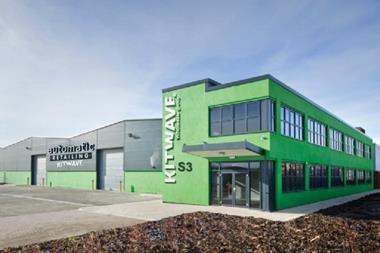
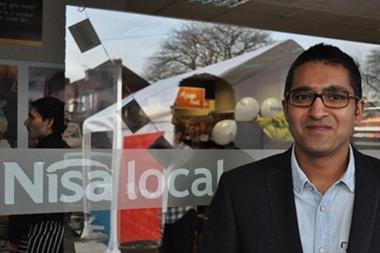
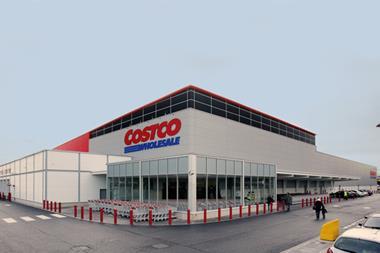
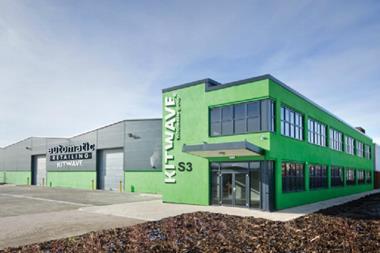
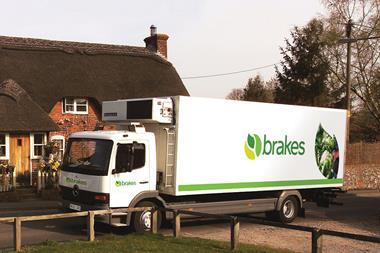




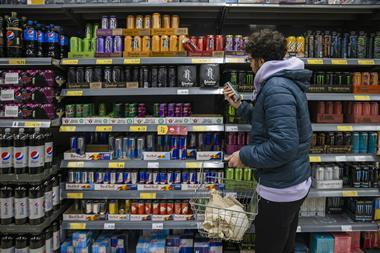
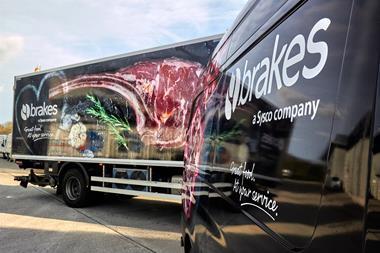
No comments yet